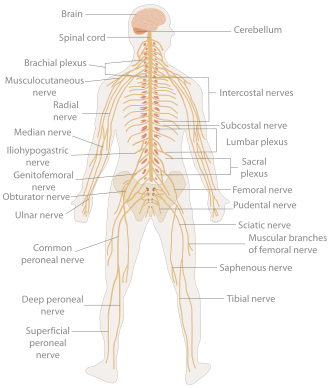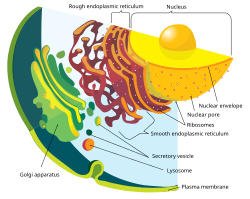Organ and tissue systems

These specific systems are widely studied in human anatomy and are also present in many other animals.
- Respiratory system: the organs used for breathing, the pharynx, larynx, bronchi, lungs and diaphragm.
- Digestive system: digestion and processing food with salivary glands, oesophagus, stomach, liver, gallbladder, pancreas, intestines, rectum and anus.
- Cardiovascular system (heart and circulatory system): pumping and channeling blood to and from the body and lungs with heart, blood and blood vessels.
- Urinary system: kidneys, ureters, bladder and urethra involved in fluid balance, electrolyte balance and excretion of urine.
- Integumentary system: skin, hair, fat, and nails.
- Skeletal system: structural support and protection with bones, cartilage, ligaments and tendons.
- Endocrine system: communication within the body using hormones made by endocrine glands such as the hypothalamus, pituitary gland, pineal body or pineal gland, thyroid, parathyroid and adrenals, i.e., adrenal glands.
- Exocrine system: various functions including lubrication and protection by exocrine glands such sweat glands, mucous glands, lacrimal glands and mammary glands
- Lymphatic system: structures involved in the transfer of lymph between tissues and the blood stream; includes the lymph and the nodes and vessels. The lymphatic system includes functions including immune responses and development of antibodies.
- Immune system: protects the organism from foreign bodies.
- Nervous system: collecting, transferring and processing information with brain, spinal cord, peripheral nervous system and sense organs.
- Muscular system: allows for manipulation of the environment, provides locomotion, maintains posture, and produces heat. Includes skeletal muscles, smooth muscles and cardiac muscle.
- Reproductive system: the sex organs, such as ovaries, fallopian tubes, uterus, vagina, mammary glands, testes, vas deferens, seminal vesicles and prostate.
